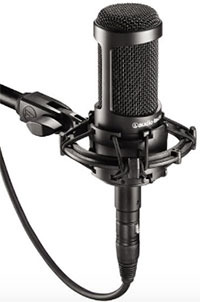Recording The Lead Vocal

The lead vocal is usually the central focal-point of a recording, especially when you’re talking about singer/songwriter type songs where the arrangement is pretty intimate.
Besides the voice, you may have a piano or an acoustic guitar and nothing else. So it’s really important to get the best vocal sound you can.
Part of that equation is the microphone. For example, the most common advice is to use a large diaphragm condenser microphone like the Rode NT2-A or the Audio-Technica AT2035.
But sometimes a mic that sounds good on one person’s voice will not sound great on someone else. You often have to find the right mic for the right person.
One other huge issue in recording vocals in home studios is the sound of the space. The converted bedrooms most of us use for recording sound pretty bad on vocals. This echo-y, reverb-y sound can be reduced by several techniques. Check out my mini-course 6 Mostly Free Tips For Making Your Audio Sound Expensive for some of these.
There are other considerations as well. The following article from Recording Magazine goes into a lot of detail. They address issues such as who will do the singing (if you’re a better songwriter than singer then it might not be you!), what recording space will be used to track the singer, and how to best monitor the session. Check out the Recording Magazine article here.

